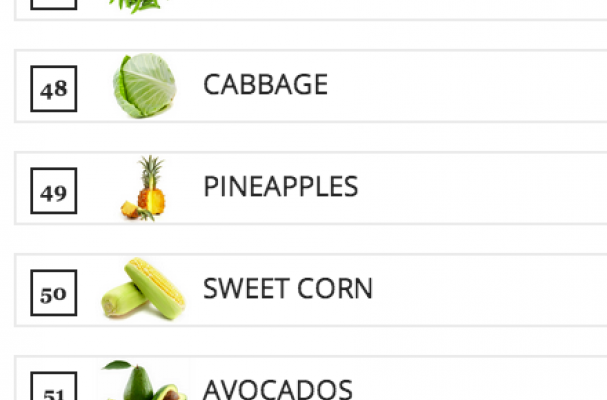
Food watchdog; Environmental Working Group(EWG), has recently released their 2014 version of the hugely popular Shopper's Guide to Pesticides in Produce. This guide shows the pesticide residue levels on the produce found in the grocery store. This allows people to buy the conventionally grown, and less expensive versions of produce with low pesticide levels, and organic varieties of produce with high levels.
A win/win for consumers, this shopping method allows many more people to afford to eat more fruits and vegetables, without the heavy pesticide loads that come with some of the conventionally grown varieties.
Simple and easy to read, there are actually two guides; the first one, called EWG's Clean Fifteen, has the 15 fruits and veggies with the lowest residual pesticides, so they can be purchased according to best price, and The Dirty Dozen, the foods that have the highest residual pesticide levels, and should be purchased as organics.
If you own the original printout, a new version might be in order. Along with the free PDF versions, EWG now offers their newest lists as Bag Tags, two hard plastic style cards, easy to carry in your wallet of shopping bag, for easy access.
Some interesting notes on the EWG's findings:
- Avocados had the lowest rate of pesticide residue of all.
- Apples, strawberries, and grapes all topped the list for highest pesticide levels. These three kid friendly fruits should be purchased organically, if your kids are like most, and eat them regularly.
- Some items were listed both as imported versions and domestic varieties, due to their differences in levels of pesticides. Imported blueberries had lower pesticide levels than domestic blueberries, but both snap peas and nectarines that were grown domestically, were lower in pesticides. This is another testament to the importance of reading labels.
The EWG's lists are important for anyone who is concerned about food safety, and shopping within a budget. Be sure to check it out.
Environmental Working Group Website
Image Sources:










